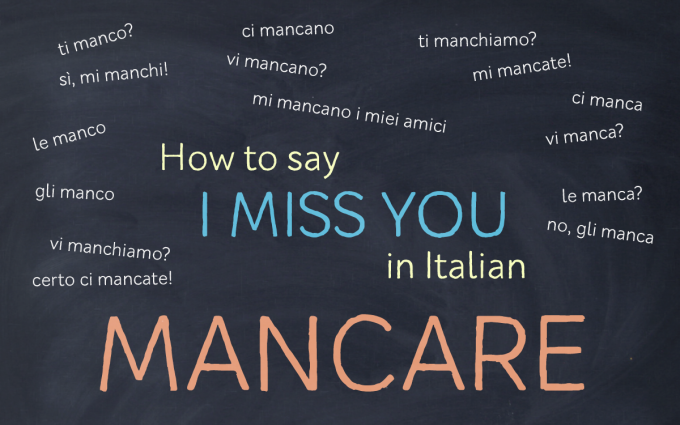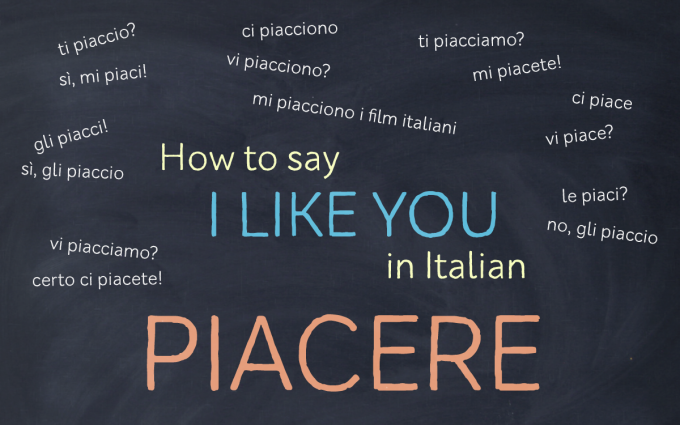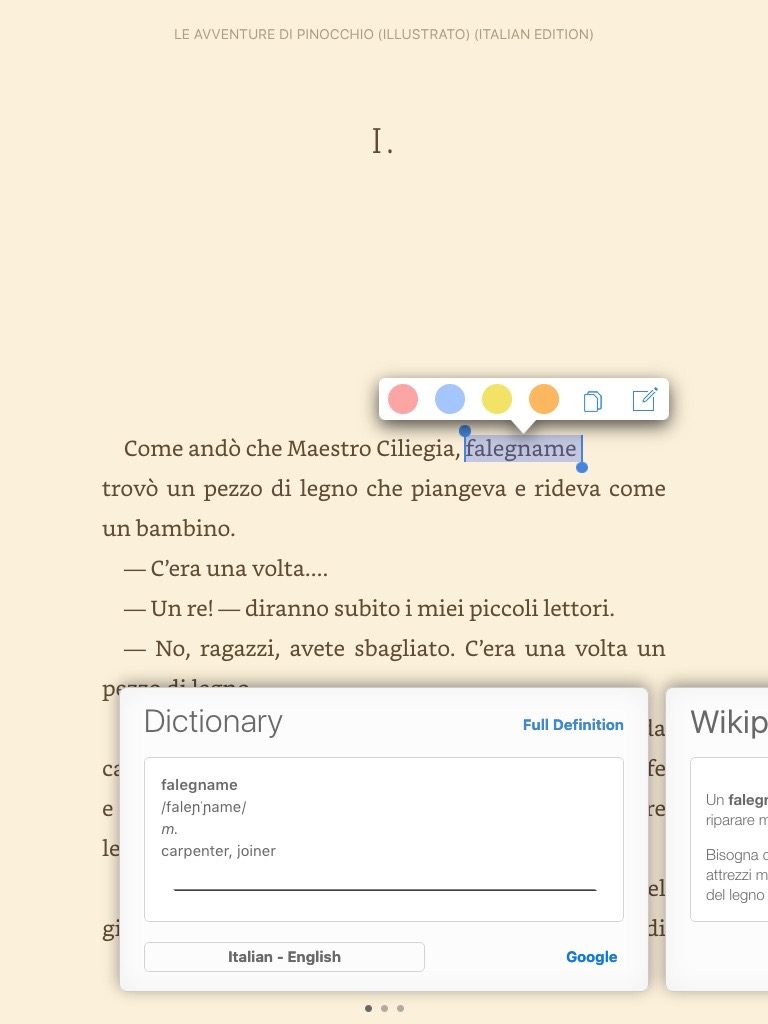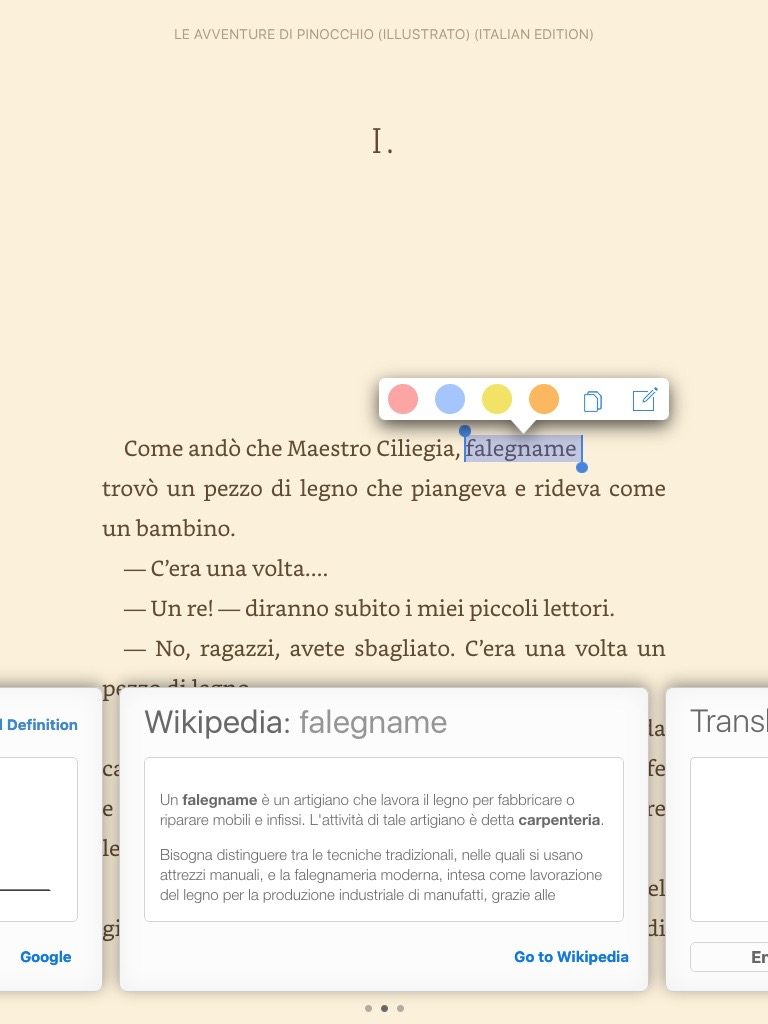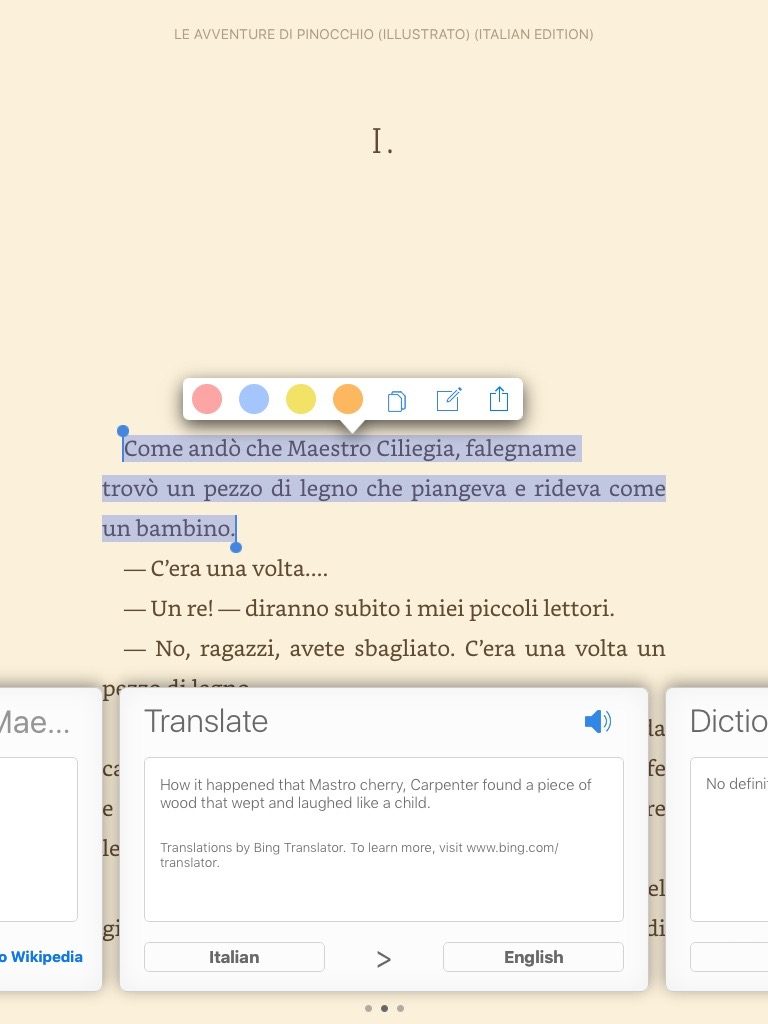Even after you learn how to use PIACERE there’s another verb that will similarly baffle you. MANCARE.
Mancare is similar to piacere in the way it is used in Italian speech, but it seems even more difficult for English speakers. One reason is that, when we’re first learning, we tend to use piacere in the third person singular – piace – a lot. We like something. But when we use mancare we use the first and second person much more often. That means we have to learn to conjugate correctly right from the start.
To get started let’s look at what we’re really saying. In English we say I miss you. To miss is something we do. But, it’s also possible to be missing: for example, he is missing. This is the way the Italian verb mancare works in this instance. Just to be clear, you can think of mancare as “to be missing (from my/his/her/your world.)” (If you prefer, you can use the word lacking.)
Let’s look at it.
a me manchi
mi manchi
literal: to me (from my world) you are missing
meaning: I miss you
a te manco?
ti manco?
literal: to you (from your world) I am missing?
meaning: you miss me?
So how would you say he misses you?
a lui manchi
gli manchi
literal: to him (from his world) you are missing
meaning: he misses you
How about we miss him?
Let’s think something in English that’s not quite literal, but will help us create the right Italian grammar.
from our world he is missing
a noi manca
ci manca
literal: to us (from our world) he is missing
meaning: we miss him
You miss us?
to you (from your world) we are missing
a te manchiamo
ti manchiamo
literal: to you we are missing
meaning: you miss us
In truth, the only way to really get good at this is to practice these daily. Tell everyone you miss them and that they miss you. Each day pick one conjugation to drill and try to use it all day. The next day pick another one. Eventually it will roll off your tongue without you even realizing it!
Here’s a little dialogue to get your started.
2. Quando parti mi manchi.
1. Ti manco? Davvero.
2. Sì, certo. Mi manchi. Perché? No ci credi?
1. Sì, ci credo. Quando parto anche a me manchi. Ma, perché non andiamo insieme? Allora non ti mancherò.
2. Perché allora mi manca mia mamma.
1. Ti manca tua mamma. Quando sono qui anche a me mancano i miei genitori.
2. E certo ai tuoi genitori manchi.
1. Sì. Ci manchiamo. Mi manca il mio paese. Mi mancano i miei amici. Mi mancano le montagne.
2. Grazie al cielo ci sono gli aerei!
Of course, this is all present tense (except for one use in the future – can you find it?). The past tense is a little more complicated. We’ll do that in another post.
